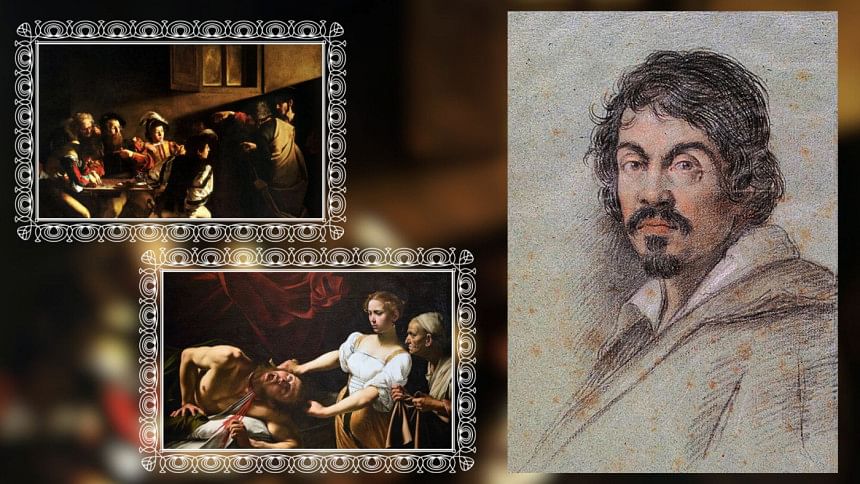Caravaggio: Light, shadows and scandals

In 16th-century Europe, the centre of the art world at the time, the High Renaissance had left an indelible mark. It was an era where the greatest paintings served as sublime examples of ideal beauty, linear perspective, and balanced compositions, emphasising the artists' talents while fulfilling the desires of their patrons. However, breaking away from the dominant tradition of painting of the time, Caravaggio made a divine entrance onto the scene with his masterpiece, "The Calling of Saint Matthew".

It is challenging to capture in words the profoundly dramatic life that Caravaggio lived, the influence it exerted on his paintings, and his impact during a period when the only visual arts portraying the human form were painting and sculpture. Nevertheless, on the occasion of his 452nd birthday, this humble attempt serves only as an introduction to the master of light and shadows.

Michelangelo Merisi da Caravaggio, known simply as Caravaggio, was born on September 29, 1571, in Milan, Italy, and lived through 38 tumultuous years that resembled a roller coaster ride through the storms of life. He purportedly lived by the Latin motto, "Nec Spe, Nec Metu", which translates to "Without hope, without fear".
In 1576, his family fled Milan to escape a plague that had consumed the entire city, and in 1577, both Caravaggio's father and grandfather perished on the same day. Later, his mother had to raise her five children in poverty and eventually passed away in 1584.
Perhaps unsurprisingly, growing up in such traumatising circumstances and their aftermath deeply affected Caravaggio and shaped his psyche, a fact evident in his adult life and reflected in his paintings.
The otherworldly virtuoso wielded a paintbrush but also carried with him a notorious reputation for his eccentric behaviors and scandals. In May 1606, while in Rome, he killed a man named Ranuccio Tomassoni during a dispute over a female prostitute, attempting to castrate him in the process. Fleeing Rome, Caravaggio remained a fugitive for the rest of his life, painting masterpieces wherever he sought refuge but also accumulating enemies along the way.
Ironically, Caravaggio painted from life and created profoundly spiritual works while himself living in the darkest of circumstances. It is perhaps this dichotomy that makes his paintings so compelling. Despite his fame during his lifetime, Caravaggio was swiftly forgotten after his death, falling out of fashion, only to be rediscovered by art critics in the early 20th century.
After a life on the run, he met a solitary end on a beach in Tuscany. For centuries, his body remained undiscovered until 2010, when forensic examinations revealed that it was not syphilis, malaria, or one of his enemies that had taken his life, as previously believed. It was lead poisoning, likely from his paints.

 For all latest news, follow The Daily Star's Google News channel.
For all latest news, follow The Daily Star's Google News channel. 




Comments